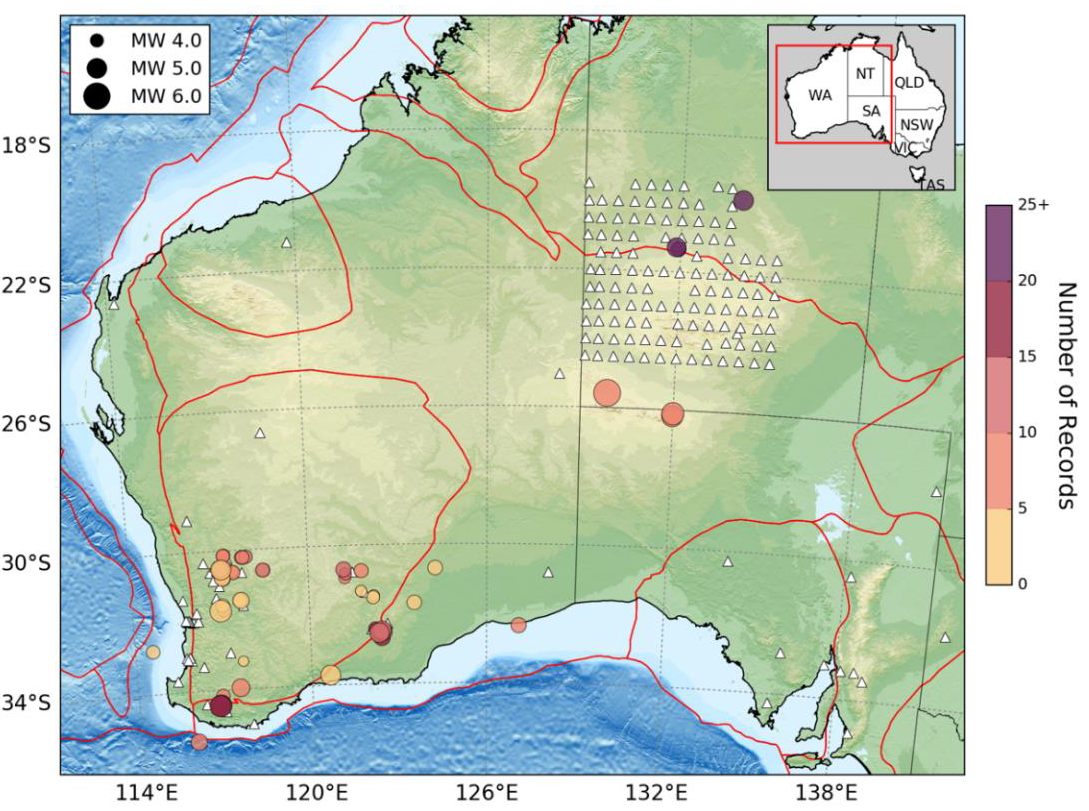Project Building a ground-motion database to better understand seismic hazards in Australia
How Geoscience Australia is analysing earthquakes to inform engineering design and contribute to seismic research internationally.
Page last updated:18 June 2024

The problem
A limited understanding of earthquake ground-motion due to lack of data
Earthquake engineering design analysis centres on ensuring that current and future structures will withstand a given level of ground-motion in the event of an earthquake – and maintain their expected standard of engineering integrity. An understanding of the threshold for ground shaking is vital for the engineering and construction industries. It is also critical for those in the emergency management sector, not only to anticipate and plan for hazards and risks, but for rapid intelligence on the likely effects of an earthquake near population centres.
To help estimate the likelihood and intensity of future earthquakes, engineers and scientists use Geoscience Australia’s National Seismic Hazard Assessment (NSHA). Central to a NSHA is ground-motion data of the area in question. However, a standardised ground-motion data collection does not exist for Australian research or engineering applications. As these datasets are commonly used to develop or test ground-motion models (GMMs), the lack of standardisation introduces large uncertainties into the NSHAs.
What we’re doing
Compiling a dataset of recorded earthquake ground-motion data to improve seismic hazard estimation
Geoscience Australia is compiling primary data for a new Australian ground-motion database. The project is:
- compiling information from moderate-to-large magnitude earthquakes starting in western and central Australia from 1990 to present day, with data recorded by Geoscience Australia’s Australian National Seismograph Network (ANSN), the Australian Seismometers in Schools Network, the Global Seismic Network, as well as state-funded networks, and University networks and temporary deployment data.
- calculating engineering parameters from an accumulating database currently housing 1,497 recordings, from 164 from earthquakes with magnitudes between 2.5 to 6.1 and hypocentral distances of up to 1,500 km.
- updating the existing database with these parameters to improve certainty of generating new GMMs
- Expanding the program Australia wide to improve certainty on a national scale.
The new database is allowing researchers to make more-informed decisions about the ground-motion models (GMMs) they use for seismic hazard analysis, leading to better-quality Australian ground-motion studies and hazard assessments.
The new high-quality resources are also improving the accuracy of Geoscience Australia’s Probabilistic Seismic Hazard Analysis (PSHA) capability and the NSHA when used for locations across western and central Australia.
The database will also be used by seismologists to calibrate improved earthquake magnitude formulae, to improve the quality of the Australian earthquake catalogue.
Read the conference paper
Selected earthquakes included in the database, sized by moment magnitude (MW) and colour-coded by the number of recordings for each earthquake. White symbols indicate the seismic recording stations (from various networks) and the red polygons indicate the neotectonic domains model.
Geoscience Australia works with state and local governments and the emergency management industry sector across Australia to develop local hazard assessments. For more information, contact hazards@ga.gov.au
Looking forward
Making communities and local infrastructure more resilient to earthquake events
- Geoscience Australia’s new database is improving knowledge and understanding of ground-motion attenuation across Australia.
- The database is also being used as a supplement to ground-motion datasets collected in analogue seismotectonic regions worldwide.
- Geoscience Australia is developing a web interface allowing users to query the database and visualise the waveforms and ground-motion parameters across events and stations.
- Future web interface users will be able to export the data and metadata to standard formats so it can be used in engineering applications, both in Australia and internationally, and to improve earthquake hazard assessments worldwide.
- Future users will also be able to contribute their data to the collection, improving the certainty of future research.
- Conclusions drawn from the database will contribute towards the update of building and infrastructure design standards, ensuring all new Australian structures are built to withstand earthquake events.
How we can help you
Contact us to gain a better understanding of hazard risk.
Our earthquake and ground-motion data can help you better understand your region’s risk profile so you can make better-informed natural hazard decisions.
Email hazards@ga.gov.au



